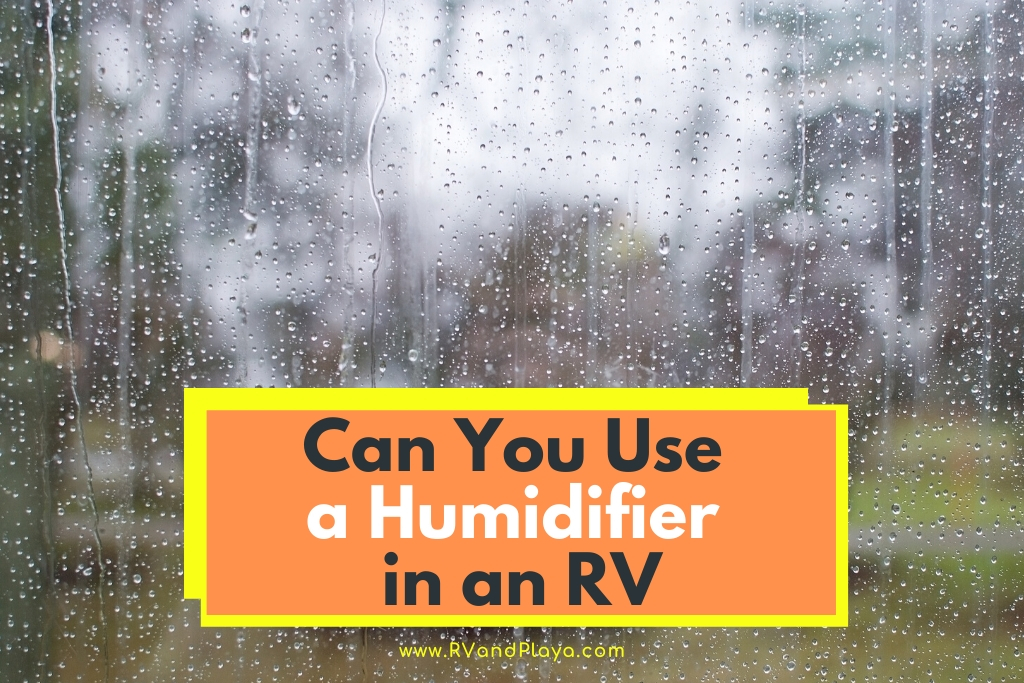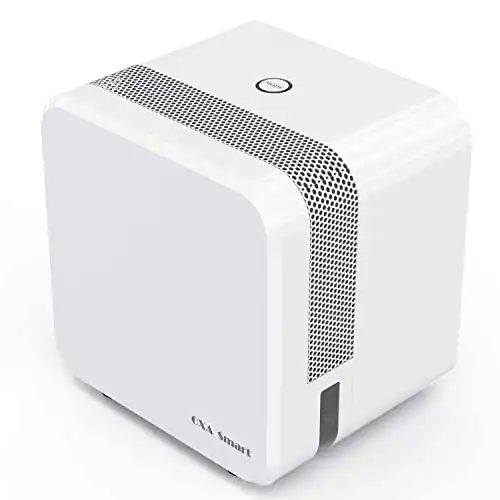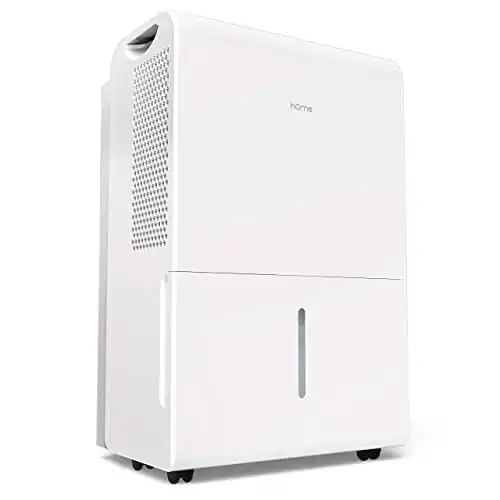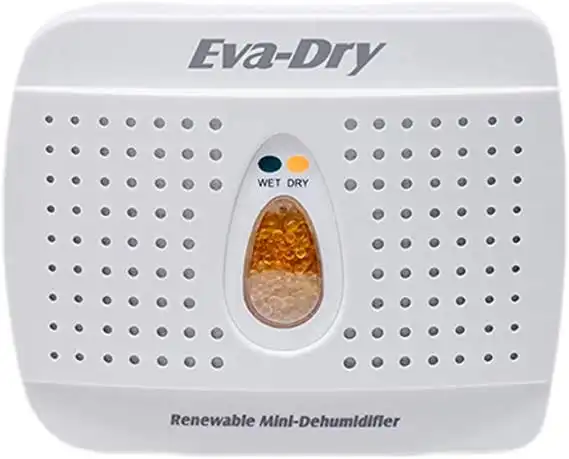There’s been much debate on whether it’s a good idea to use a humidifier in an RV. Some drivers are for it, and others aren’t. But it’s not hard to understand why. Weather patterns are different in various parts of the country. Therefore, what works in one area may not provide expected results in another.
So, can you use a humidifier in an RV? Yes. You can use a humidifier in an RV. However, you need to strike a balance between too much and just enough moisture. A small amount of moisture in your RV is essential for your health, but too much can cause problems like mildew and mold development.
One of the primary reasons most drivers wouldn’t recommend humidifiers for RVs is the fact that these types of vehicles have lots of hidden places. You may not notice when mold or mildew starts developing in the nooks and crannies. However, with the right approach, you should be able to use the humidifier without any challenges. In this article, you’ll learn what to expect when you use a humidifier in an RV, ways to control it, and some of the best ways to manage humidity in your RV.
Table of Contents
Using a Humidifier in an RV – What to Expect
Most RV drivers find themselves in a dilemma when trying to decide whether to invest in an RV humidifier. On the one hand, there’s a high risk of mold and mildew development if the moisture gets too high in the small space. And what’s worse is the fact that you may not notice it early enough because of the tight spaces inside the RV. As a result, you risk damaging the structural parts of your vehicle in the process.
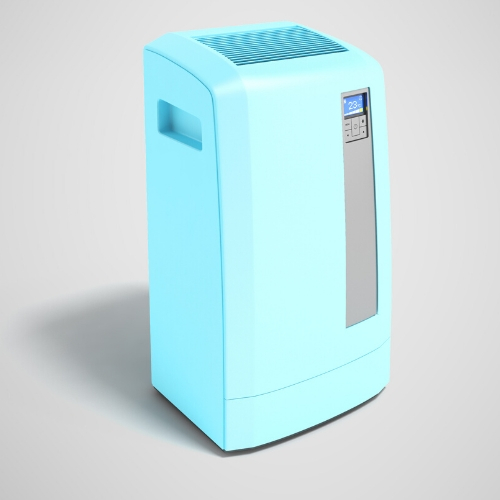
Not to mention, the Poison Control Center cautions that individuals who are exposed to mold are at a high risk of respiratory diseases and exacerbation of asthma. You’re also at a high risk of developing allergic reactions if you already have allergies since dust mites also thrive in high humidity areas.
On the other hand, when you’re traveling to areas where there are massive temperature dips and low humidity such as the Northeast and Southwest, you face another challenge – lack of adequate humidity. Additionally, when the temperatures fall below freezing, the humidity in your RV may condensate and freeze on the RV windows. (Source: Condensation in Your RV)
So, is there a way to enjoy the best of both worlds? Can you use a humidifier in an RV without risking your health, freezing, mold, and mildew growth?
The Right Way to Use a Humidifier in an RV
The trick to using a humidifier in an RV successfully is to strike a perfect balance where you are not letting the humidity fall too low or get too high. However, to do this, you need to be aware of the ideal humidity level in an RV.
The ideal humidity range for any indoor space is 40 to 60%. According to Dr.Stephanie Taylor, a Harvard Medical School graduate, and lecturer, this humidity range will help keep your body defenses working correctly to prevent colds, flu, and other infections.
Maintaining your humidity levels below 60% also discourages mold growth and dampness in any enclosed space. (Source: United States Environmental Protection Agency). Therefore, it’s possible to find that “sweet spot” and enjoy the best of both worlds.
Dr. Taylor suggests using a hygrometer to measure the humidity level in your space to ensure you’re in the right range at all times. The following hygrometers will work fine in your RV:
- SMARTRO SC42 Professional Digital Hygrometer
- Govee Thermometer Hygrometer, Accurate Indoor Temperature Humidity Sensor
- AikTryee Mini Hygrometer, 2PCS Upgraded Mini Digital Humidity Gauge
Once you’ve figured out the humidity range in your RV, the next step is choosing a humidifier that will help you stay within the range.
Choosing the Best Humidifier for Your RV
Even after investing in a hygrometer and understanding the humidity range in your RV, you may have to go through a trial and error process to achieve a perfect balance when you start using a humidifier. However, to improve your chances of success, you need to buy a humidifier that suitable for an RV.
Do not choose a humidifier that’s designed for large spaces because doing so will result in too much moisture in the vehicle. A humidifier that is too small will humidify one area of the RV and leave the rest of the spaces exposed to dry air.
The trick is to buy a humidifier that’s the right size for your vehicle. If you have many doors and windows, it’s best to choose small humidifiers you can use in the different areas in your RV.
The humidifiers below would work perfectly in an RV:
· Crane Adorables Ultrasonic Cool Mist Humidifier: This humidifier covers up to 500 square feet and uses 1 gallon of water. It’s small in size and comes with a handle for easy carrying. You’ll also love that it offers quiet operation, it’s easy to clean, and it features anti-microbial material, which helps prevent mold and bacteria growth. Also, it’s small in size, so it won’t take up too much space in your RV.
· MADETEC Ultrasonic Cool Mist Humidifier Portable Mini USB Air Humidifier: If you’re looking for small humidifiers you can use in different parts of your RV, you won’t go wrong with this USB humidifier. It uses 230 ml of water and lasts for about 5 to 10 hours. Besides, it features an automatic shut off, it offers convenient powering, and it is portable.
· TaoTronics Cool Mist Humidifier: This humidifier has a 4-liter capacity, which makes it suitable for anyone looking for a single humidifier for the entire RV space. It offers quiet operation and gives you the option of setting your desired humidity range. This feature saves you the need to keep taking humidity measurements in the RV.
How Do You Control Humidity In An RV?
Temperature fluctuations affect moisture in the air, and when it’s too much, it becomes easier for colder objects to pull the moisture on to them. As a result, you’ll notice moisture buildup in your window panels, seals, metallic objects, and other parts of your RV.
How do you control or stop humidity in your RV? Well, investing in the best RV humidifier won´t get rid of all humidity problems. Luckily, there are ways you can control condensation in your RV to avoid severe damage. Here are a few Steps you can apply in order to control humidity in your RV:
- Rely on Your Weather Station for Updates
- Invest in moisture Absorbers
- Have a Dehumidifier Close to You at All Times
- Improve ventilation and Keep Your RV Cool
- Run an Air Conditioner
- Avoid condensation in your RV
- Increase air flow
- Opeb the windows or the doors
- Wheb possible cook outside the RV
Rely on Your Weather Station for Updates
If you’re traveling to a new area, one of the fastest ways to get information about how much humidity you’re dealing with is to rely on the information provided in the closest weather station. Once you have this information, the next step is to use your hygrometer to measure the humidity level in your RV.
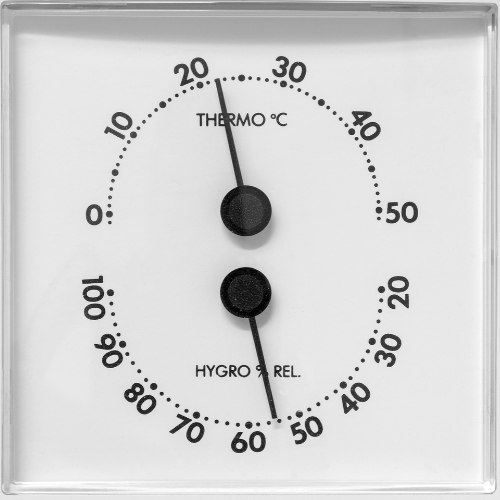
Remember, an ideal humidity range is between 40 to 60%. Therefore, you need to ensure you’re within this range to avoid health, mold, or mildew issues. A humidifier will help you raise the humidity level when it falls below the recommended minimum. However, if the humidity gets too high, the following tips will help you get back to the acceptable range.
Invest in Moisture Absorbers
The best thing about moisture absorbers is the fact that they’re pocket friendly and come in different sizes. However, not all materials used to make moisture absorbers are environmentally friendly. For this reason, you need to be careful about which products you purchase since some of them may have negative impacts on pets and children.
When it comes to moisture absorbers, you have two options:
Repurposing
One of the best items for moisture absorption is the silica gel packets that come in electronics, shoes, and other store-bought products. If you have these at your disposal, you don’t need to purchase moisture absorbers. You can place them in the affected areas, and they’ll get rid of the moisture.
However, keep in mind that silica gel is a poisonous substance and shouldn’t be ingested. If you decide to use it for moisture absorption, keep it away from children and pets. You should also know that silica gel is more effective when used at room temperature. When the temperatures exceed 104 degrees Fahrenheit, the product’s ability to draw moisture from the surrounding will be affected.
An excellent alternative to silica gel is calcium chloride. The calcium and chlorine mixture is an excellent solution for high humidity moisture absorption purposes. However, if you want to get the most out of this solution, consider using a fan over the bucket of calcium chloride. The fan aids in air circulation, which in turn helps the moisture circulate above the compound for a faster, more effective moisture absorption process. (Source: Do It Yourself)
If you don’t have too much moisture to get rid of, clay absorbers are an excellent choice. The only disadvantage with this method is that it’s not the best for large areas due to its low absorbing power. However, you can uses clay alternatives like coal, rocks, and charcoal for a better experience.
Store-bought Moisture Absorbers
You also have the option of purchasing specific moisture-absorbing products. One of the most popular products for this purpose is DampRid. The best thing about this product is the fact that it not only draws moisture from the surrounding but also eliminates musty odors, leaving your RV smelling fresh and clean.
However, if you decide to use DampRid, you need to be very careful when handling it since it can be poisonous for you, your kids, and your pets.
Have a Dehumidifier Close to You at All Times
If you have a leakage or lots of water accumulation in your RV, another excellent way to get rid of it is by using a dehumidifier. If there’s a leakage and the water is too much, you may need a large dehumidifier to get all the water out. However, if you’ve noticed the water early enough before there’s too much damage, you can use a small dehumidifier that you can store in your RV.
Below are some excellent dehumidifiers that would work perfectly in an RV:
· Pro Breeze Electric Mini Dehumidifier: This humidifier is ideal for spaces of up to 250 square feet; it’s small and portable. It also offers quiet operation and features automatic shut off. Its compact design also makes it the perfect choice for small spaces like RVs.
· Hathaspace Portable Home Dehumidifier with Drain Hose & Pre-Filter: This dehumidifier is perfect for spaces of up to 250 square feet. It works quietly, it’s small enough to fit small spaces like RVs, and it eliminates up to 750 ml of water per day. The dehumidifier also has a large water tank that holds up to 2000ml and shuts off when it’s full so that you know when it’s time to drain it. Besides, it can be attached to a drain hose for hassle-free operation.
· Eva Dry Wireless Mini Dehumidifier: The last thing you need is another electric device in your RV. This dehumidifier is perfect because it’s not only rechargeable but also portable. Not to mention, it’s small in size and does an excellent job of getting rid of moisture. It works for rooms of up to 333 cubic feet and goes for up to 30 days without requiring a recharge.
Keep Your RV Cool
Fancy gadgets won’t help you control moisture in your RV if you don’t take the necessary steps to keep your RV cool. Fortunately, there are several ways to keep your RV cool without using an air conditioner. The trick is to ensure the air inside the RV is cooler than the exterior. (Source: RVShare).
Below are some of the ways to go about it:
- Park your RV in a shady spot: Outside temperatures have a significant impact on the moisture levels inside your RV. The higher the temperature getting inside your RV, the higher the risk of moisture spikes. To prevent this, park your RV in a shaded area, making sure the sun shines on the parts of the RV with the least amount of windows.
- Improve ventilation: To keep your RV cool, you need to ensure that there’s a way for the warm air to leave the RV and cool air to enter. A simple way to accomplish this is to open the windows in the shaded side of the RV and close the ones that are facing the sun directly. Ceiling vent fans also do an excellent job of circulating air inside the RV to enhance cooling.
- Ensure your refrigerator vent is running correctly: Most RV refrigerators release a lot of heat when cooling food. For this reason, they’re designed to expel the excess heat using an external vent. Ensure the vent is always clean and that nothing is blocking it for proper elimination of heat. It may also help to use a ventilation fan to aid in more heat elimination.
- Cook and dry clothes outside: Some cooking methods affect humidity levels more than others. For instance, boiling water, cooking pasta, and making ice tea can release too much moisture into your RV. To prevent this, consider cooking all your food outside. Also, consider drying your clothes outside to prevent accumulating too much moisture in your RV.
Best RV Dehumidifier
Below you can find the 3 best RV Dehumidifiers to Reduce Moisture and Prevent Damp in Your RV:
|
It’s an ultra-efficient mini RV dehumidifier built to handle spaces up to 215 square feet in size. Despite its relatively small size, it can remove up to 350 milliliters of water from the air per day and it has a 650 milliliter tank capacity. |
This is the king of dehumidifiers best for full-time RVers that live in super humid climates. Designed for large scale use, it can remove up to 50 pints of water from the air per day. It has a 1.8 gallon water tank capacity and compact dimensions so you can set it up out of the way in your RV or camper van. |
They worked quite effectively and only needed to be plugged into dry out every other week, and that’s a pretty humid environment down there. If you have a large RV, I’d recommend buying several of these. You can easily hang them in the closet, shower, pantry, or any other high-humidity areas. |
It’s an ultra-efficient mini RV dehumidifier built to handle spaces up to 215 square feet in size.
Despite its relatively small size, it can remove up to 350 milliliters of water from the air per day and it has a 650 milliliter tank capacity.
This is the king of dehumidifiers best for full-time RVers that live in super humid climates.
Designed for large scale use, it can remove up to 50 pints of water from the air per day.
It has a 1.8 gallon water tank capacity and compact dimensions so you can set it up out of the way in your RV or camper van.
They worked quite effectively and only needed to be plugged into dry out every other week, and that’s a pretty humid environment down there.
If you have a large RV, I’d recommend buying several of these. You can easily hang them in the closet, shower, pantry, or any other high-humidity areas.
Run an Air Conditioner
Running an air conditioner inside your RV may also help you reduce humidity levels. As the AC circulates air inside the RV, it also reduces humidity. However, when it comes to using an AC, you need to ensure it’s running in tip-top shape to avoid any further problems.
The De’Longhi 3-in-1 Portable Air Conditioner, Dehumidifier & Fan is one of the best ACs on the market that would work fantastically in an RV.
Also, be aware of “swamp coolers,” also commonly known as evaporative coolers. This is a type of AC that’s also advertised as a humidifier. While it cools your surrounding air, it also releases more moisture into the air, which can be counter-productive if your goal is to reduce the amount of moisture in your space.
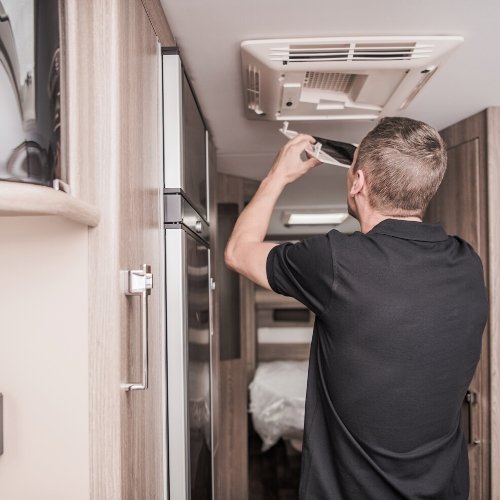
Avoid Condensation in your RV
Condensation happens when cold air hits a warm surface, and the change happens so rapidly that the moisture from the cold air evaporates on the warm surface and causes condensation to form.
You don’t want this moisture to accumulate because, when this happens, it can create a breeding ground for mold and mildew. Besides, it may affect the structural components of your RV. Luckily, there are ways you can control condensation in your RV to avoid severe damage
I recently wrote an article on this site called “15 Effective Ways to Stop Condensation in Travel Trailers or RV“. In it, I mentioned in detail what you should do in order to reduce or stop the humidity in the RV.
STOP CONDENSATION TIPS Camper Van >> Check out the video below
Keep Your RV Humidity in Check
As you have seen, it’s possible to use a humidifier in an RV. However, for the best results, you need to monitor the humidity levels in your RV and your surroundings to know how to tweak it so that you remain in the recommended range of 40% to 60%. In addition to this, be sure to use the tips we’ve provided to eliminate humidity and keep your RV moisture-free. Things like drying clothes and cooking food outside will go a long way in helping you avoid adding unnecessary moisture into your RV.
Recommended reading
For more helpful articles about travel trailers please check out our articles below:
Setting Up a Travel Trailer to Live In: 20 Essential Steps
How to Prevent Travel Trailer or RV Pipes from Freezing?
How to Choose the Right Size Travel Trailer: An In-Depth Guide
Does Your Travel Trailer Have an Inverter? Here’s How to Check
Recent Posts
Is Toyota Remote Connect Free? (Subscription, Services Plans)
Does Toyota Remote Connect have an included trial? It used to be the case that, when you bought a new car, you made one straightforward payment and that was it. Now, it feels like there are...
Toyota Safety Connect: What It Is And Why You Need It? Whether you’re buying a new Toyota or you’ve had one for a while you will have been given the hard sell on their Connected Services but do...

